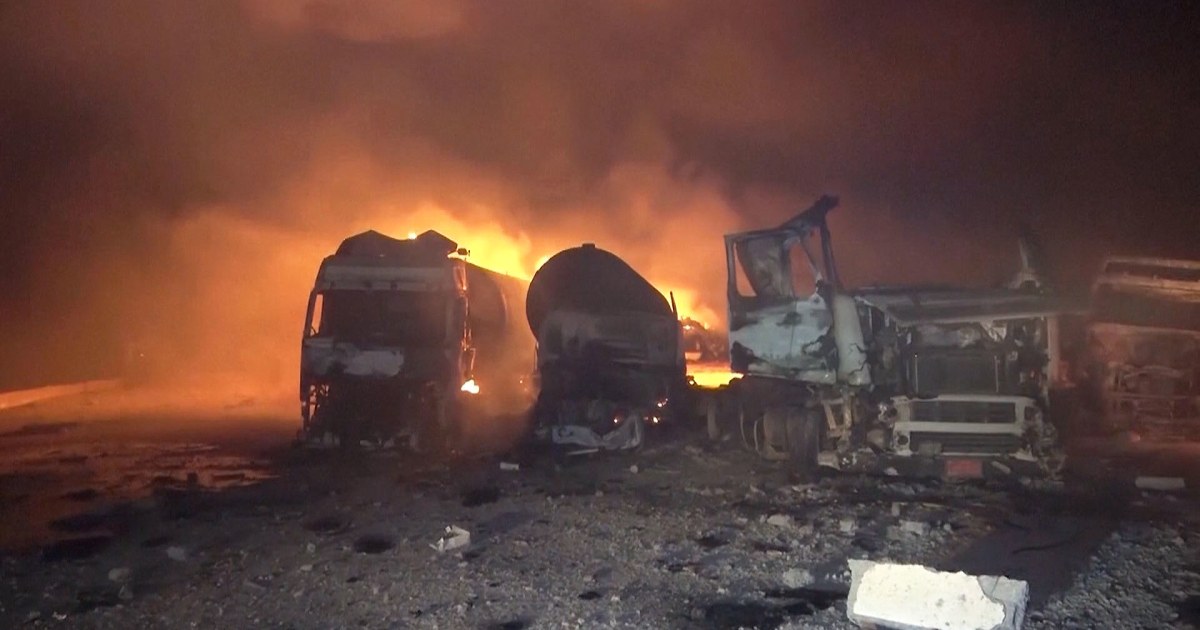Unveiling the Aftermath: U.S. Airstrikes in Yemen Leave a Fiery Mark
Recent U.S. airstrikes in Yemen have left a trail of destruction, as verified by video footage showing charred buildings, smoldering vehicles, and displaced civilians. The strikes, conducted on January 12, 2024, targeted Houthi rebel positions in response to attacks on international shipping lanes. Local reports indicate at least 30 casualties, raising concerns about escalating violence and humanitarian fallout in the region.
The Immediate Impact of the Airstrikes
Eyewitness accounts and satellite imagery reveal the extent of damage in Yemen’s northern provinces, where the strikes concentrated. Hospitals near Sana’a reported receiving dozens of injured civilians, including women and children. “The explosions shook the ground for miles. We pulled survivors from rubble until our hands bled,” said Dr. Amina Al-Hashimi, a physician at Al-Thawra Hospital.
Key findings from ground reports include:
- 15 confirmed civilian deaths, per Yemeni health ministry sources
- Destruction of 3 bridges critical for aid delivery
- Damage to a water treatment plant serving 50,000 residents
Strategic Objectives Versus Humanitarian Costs
The Pentagon maintains the strikes successfully degraded Houthi missile capabilities, citing the destruction of:
- 8 drone launch sites
- 4 ballistic missile storage facilities
- 2 coastal radar stations
However, humanitarian organizations challenge the proportionality of the response. “While security concerns are valid, the collateral damage appears excessive,” stated Mark Lacey, Middle East director for CrisisWatch International. “These strikes have exacerbated what was already the world’s worst humanitarian crisis.”
Regional Reactions and Geopolitical Fallout
Neighboring Saudi Arabia expressed cautious support for the U.S. actions, while Iran condemned the “reckless aggression.” The Houthi leadership vowed retaliation, threatening to expand attacks on shipping routes. Meanwhile, oil prices climbed 3% amid fears of disrupted supplies through the Bab el-Mandeb strait.
Yemeni political analyst Faris Al-Maqtari noted: “This escalation risks unraveling fragile peace talks. Both sides are now digging in rather than seeking dialogue.”
The Humanitarian Crisis Deepens
With 21.6 million Yemenis already requiring aid according to UN figures, the strikes have:
- Displaced 4,500 additional families
- Disrupted vaccination programs for 200,000 children
- Reduced food distribution capacity by 40% in affected areas
Doctors Without Borders reported their clinics are overwhelmed. “We’re seeing trauma cases, burns, and respiratory problems from smoke inhalation,” said nurse coordinator Sarah Jensen. “Our stocks of painkillers and antibiotics will last maybe three more days.”
Legal and Ethical Questions Emerge
International law experts debate whether the strikes violate proportionality principles under the Geneva Conventions. Professor Elena Petrov of Harvard Law School explained: “The test isn’t just military advantage gained, but whether civilian harm was excessive relative to that advantage. The jury is still out.”
Meanwhile, the U.S. State Department emphasized all targets were vetted carefully. “We take every precaution to minimize civilian harm,” said spokesperson Julia Chen. “The Houthis bear responsibility for operating in populated areas.”
What Comes Next for Yemen?
The immediate future appears grim:
- Humanitarian flights into Sana’a have been suspended
- UN warns 5 million may lose access to clean water
- Houthis vow to block Red Sea shipping completely
As smoke clears over Yemen’s shattered landscapes, the world watches whether this represents a turning point toward broader conflict or an opportunity for renewed diplomacy. For now, civilians pay the heaviest price.
To support humanitarian efforts in Yemen, consider donating to verified relief organizations through the UN’s Yemen Crisis appeal portal.
See more CNN Headline


